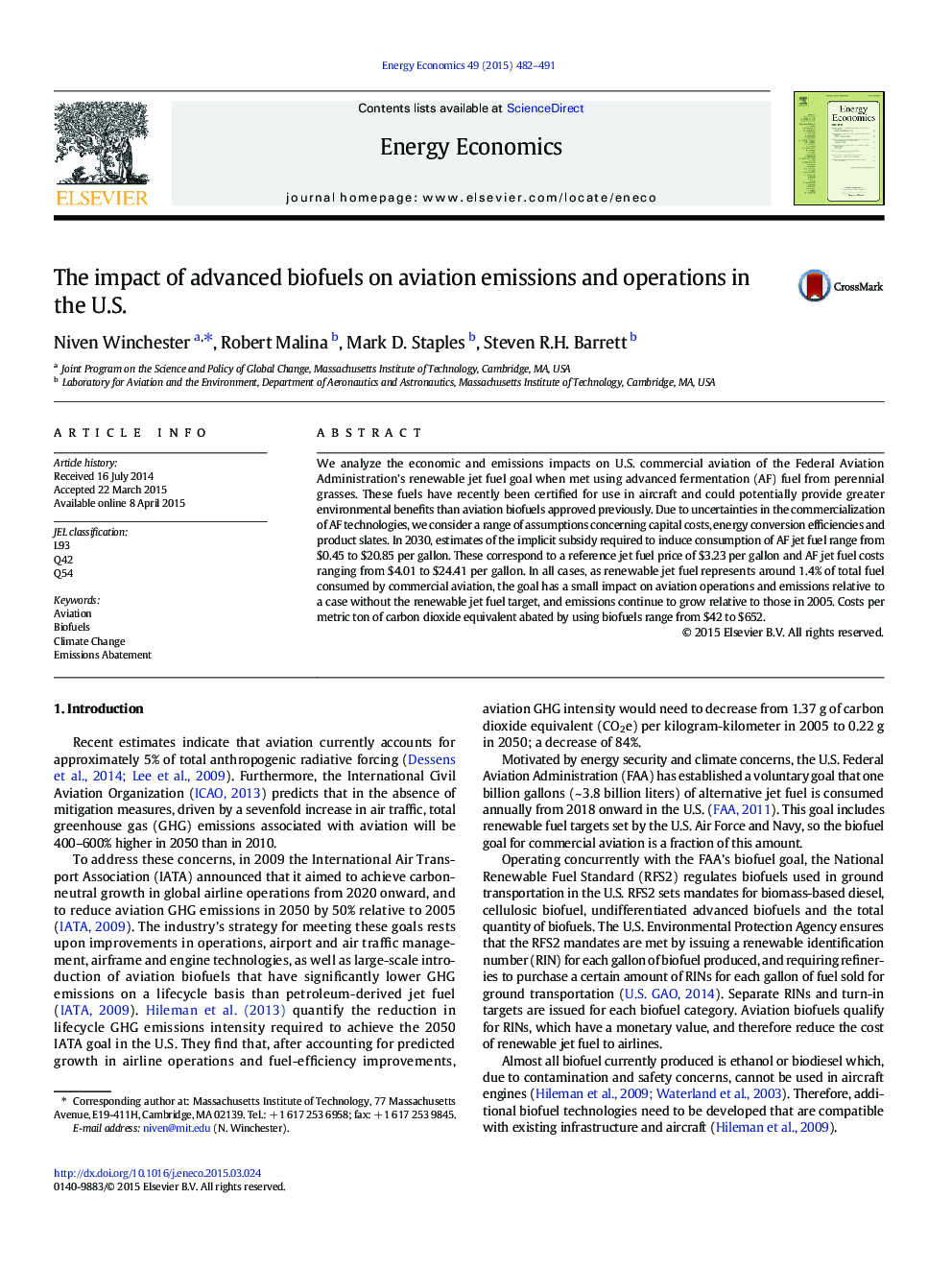| کد مقاله | کد نشریه | سال انتشار | مقاله انگلیسی | نسخه تمام متن |
|---|---|---|---|---|
| 5064529 | 1476714 | 2015 | 10 صفحه PDF | دانلود رایگان |
• We analyze a goal for renewable jet fuel consumption in the U.S.
• We assume that the target is met using advanced fermentation fuel.
• Meeting the goal has a small impact on aviation operations and emissions.
• Aviation emissions continue to increase as the industry grows.
• Abatement costs from using biofuels are higher than current market-based measures.
We analyze the economic and emissions impacts on U.S. commercial aviation of the Federal Aviation Administration’s renewable jet fuel goal when met using advanced fermentation (AF) fuel from perennial grasses. These fuels have recently been certified for use in aircraft and could potentially provide greater environmental benefits than aviation biofuels approved previously. Due to uncertainties in the commercialization of AF technologies, we consider a range of assumptions concerning capital costs, energy conversion efficiencies and product slates. In 2030, estimates of the implicit subsidy required to induce consumption of AF jet fuel range from $0.45 to $20.85 per gallon. These correspond to a reference jet fuel price of $3.23 per gallon and AF jet fuel costs ranging from $4.01 to $24.41 per gallon. In all cases, as renewable jet fuel represents around 1.4% of total fuel consumed by commercial aviation, the goal has a small impact on aviation operations and emissions relative to a case without the renewable jet fuel target, and emissions continue to grow relative to those in 2005. Costs per metric ton of carbon dioxide equivalent abated by using biofuels range from $42 to $652.
Journal: Energy Economics - Volume 49, May 2015, Pages 482–491
